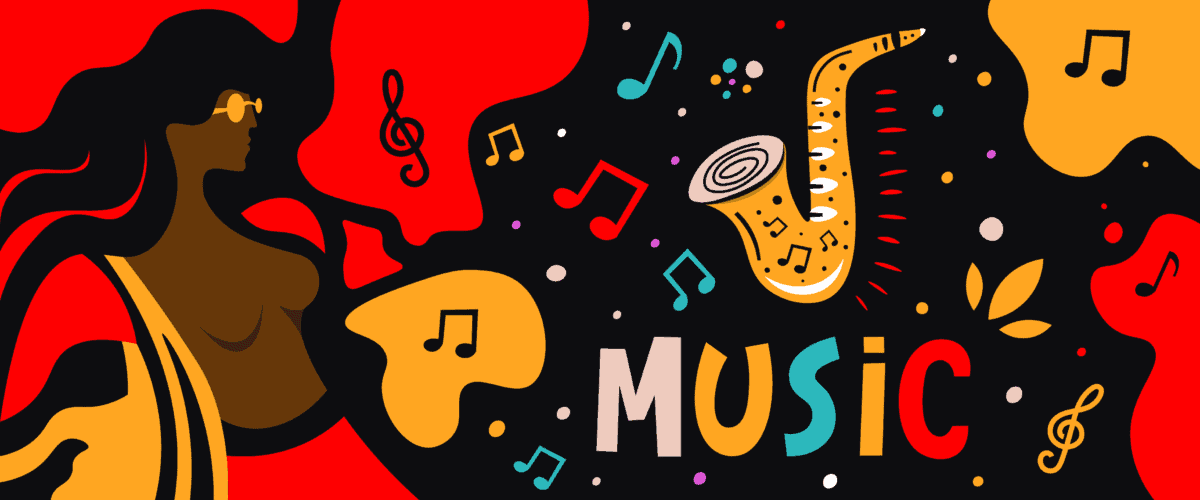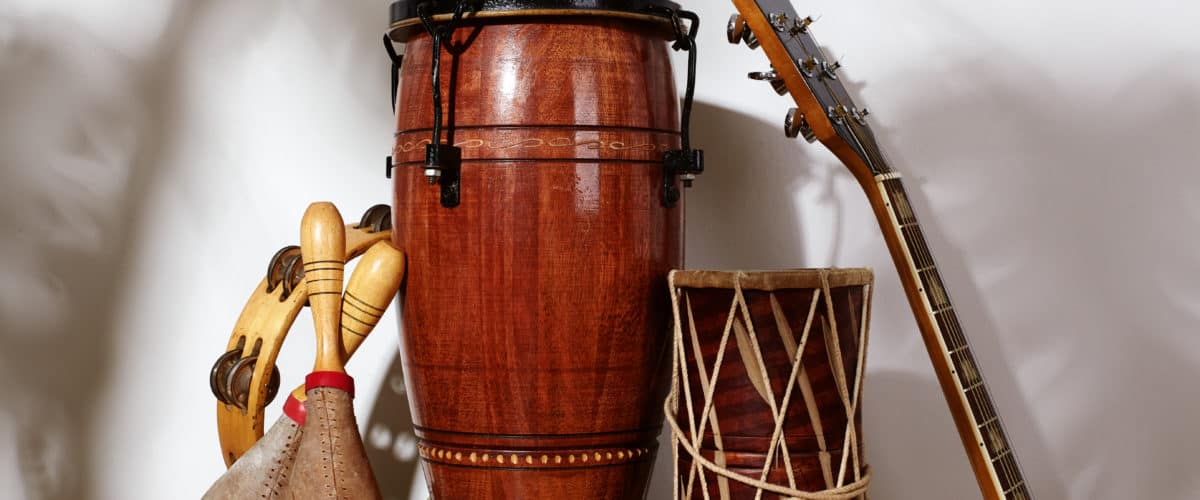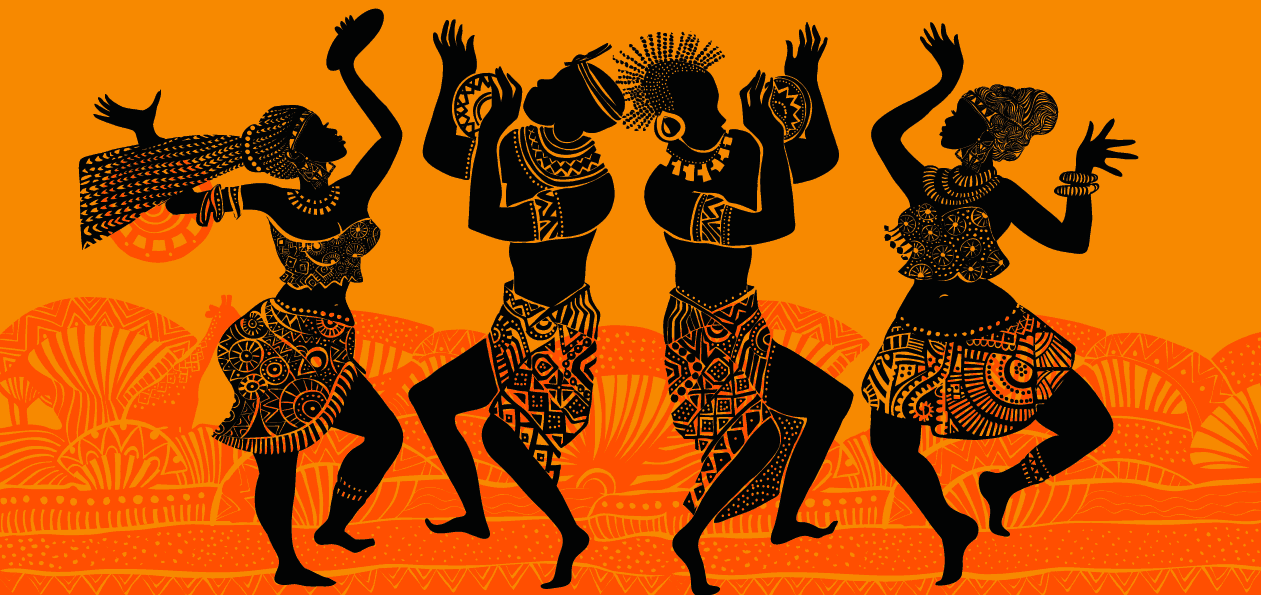While music has always been a tool to express oneself, it has also been used to mark major events and provide sanctuary during times of distress. The music of Africa chronicles the story of civilization from the beginning to the end, while providing insight into a particular way of life.
Music is a universally enjoyed form of entertainment in Africa. The importance of African music can hardly be overstated, as seen by the prevalence of music in so many African rituals. Not just in praise or condemnation, but also regularly, songs serve as a record of historical occurrences. There are many different types of African music. Song lyrics emphasize melody and rhythm, although many African languages employ pitch to encode a sound. An emphasis on rhythm and percussion is prevalent in African music, with several distinct rhythms performed simultaneously.
In African culture, music serves a variety of roles, both social and practical. Circumcision, childbirth, and funerals are all situations where music is employed. Some listen to music while working or resting at home. Both the music of Sub-Saharan Africa and North Africa may be categorized as African. There is a long distance between these two locations. These two places’ diverse cultures and musical traditions necessitate including a wide range of dances and instruments in music education. In each location, there is a distinct musical culture, which includes dancing. Due to its proximity to the Middle East, North African music has a special place in the region’s musical legacy. Music and dance styles in these regions are quite similar. Eastern, central, southern, and western Africa make up the bulk of African music.
An Overview of African Musical Traditions

Because music is an intrinsic part of daily life in many African civilizations and tribes, there is no formal classification for it. Music has been transmitted in many ways throughout history. African music differs from Arabic and Western traditions in its tone. Many of Sub-Saharan Africa’s distinct musical traditions may be traced back to the region’s rich cultural diversity. Songs were produced for several reasons, but one of the most prevalent was to express the emotions of the composers. The instruments used in these songs were performed in a way that mimicked how individuals in that culture would sing the lyrics in their native language.
There are several sources of inspiration to be found in African music. As previously stated, Africa is home to many diverse ethnic groups and cultures. A lot of African tribes were scattered throughout the continent in quest of fresh agricultural, hunting, and fishing grounds. As a result of these developments, music’s impact rose. They wrote their songs based on their personal experiences. Because of drought, people were obliged to write songs to appease the rain gods. Songs were written to describe their journey from where they were to where they are now. Food influences other genres of music as well. In celebration of the abundant harvest, gratitude hymns were sung to the gods. Harvesting songs were popular since harvesting required a lot of human labor.
Instruments Found in African Music

African musical instruments are regarded as beautiful art in and of themselves because of their unusual patterns, decorations, and embellishments. Musicians who play instruments with mystical symbols inscribed on them may get messages from the universe or their ancestors. Some African musical instruments can be used for some purposes. Due to ethical constraints, several instruments can only be played in religious or social situations. Certain instruments and the civilizations they represent have a great deal of significance in Africa.
Membranophones: All African drums with the exception of the slit drum fall under this category.
Chordophones: These musical instruments produce sound by stretching strings between two set locations. There are also zithers, lutes, and harps among these instruments.
Idiophones: Due to their hardness and flexibility, these instruments make sound without the need for strings or stretched membranes. They can be subdivided into rhythm instruments and a number of tuned versions.
The body: This session includes body movements such as foot stamping and hand clapping.
Music from the Northern African Region
This region’s music varies from that of Sub-Saharan Africa owing to its emphasis on solo performances, and the variety of instruments and dancing styles employed to perform the song. Northern African music is varied because it blends music passed down from generation to generation with Middle Eastern music. This region’s music has had a significant impact on contemporary music.
Music from Sub-Saharan Africa
Several aspects characterize Sub-Saharan African music. The musical rhythms are polyrhythmic. This is accomplished by combining many beats into one. A subtype of polyrhythm is produced by superimposing cross beats over the core beats. These beats express the emotional substance of the song. Cross-rhythmic rhythms abound in the music of Niger and Congo, which have one of the most diversified musical traditions in Sub-Saharan Africa. The standard pattern often called the seven-stroke figure, is the most common key pattern in Sub-Saharan Africa.
Finally, we cannot imagine a world without music since it allows us to communicate our ideas and feelings throughout the day. Historically, African music has affected daily life and cultural customs. African music is incredibly varied and abundant. In addition, instruments are categorized according to their country of origin. This continent’s music has an abundance of promise, but it has not yet been completely explored. Therefore, an understanding of musicology may help debunk misconceptions about Africa, its people, and the music that has long been linked with the region.
Photo: IVANCHINA ANNA/Shutterstock
You might also like:
Support us!
All your donations will be used to pay the magazine’s journalists and to support the ongoing costs of maintaining the site.
Share this post
Interested in co-operating with us?
We are open to co-operation from writers and businesses alike. You can reach us on our email at [email protected]/[email protected] and we will get back to you as quick as we can.









